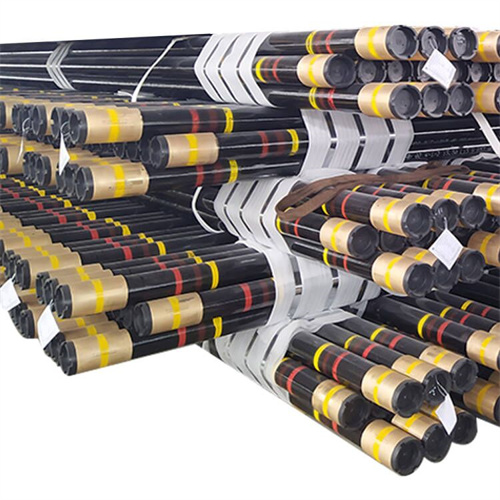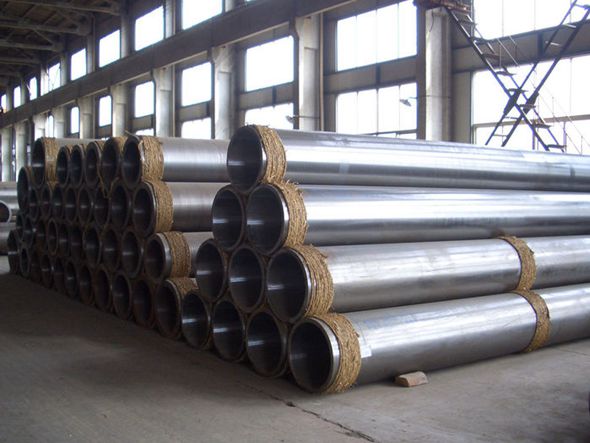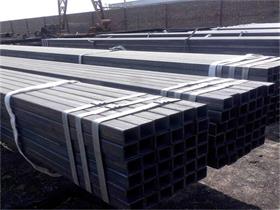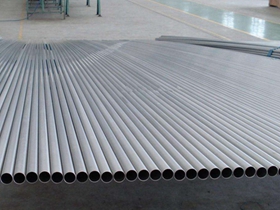Benefits of Using Corrugated Sheet Roofing for Residential Buildings
Corrugated sheet roofing has been a popular choice for residential buildings for many years due to its numerous benefits. This type of roofing Material is made from metal sheets that are corrugated or folded into a series of parallel ridges and grooves. These ridges and grooves not only add strength and durability to the roofing material but also provide a distinctive look that can enhance the overall aesthetic appeal of a residential building.| Labels | Outside diameter (d/mm) | T&C (kg/m) | Wall thickness (t/mm) | Type of end-finish | |||||||
| 1 | 2 | J55/ K55 | M65 | L80/ R95 | N80-1/Q | C90/ T95 | P110 | Q125 | |||
| 4-1/2 | 9.50 | 114.30 | 14.14 | 5.21 | PS | PS | – | – | – | – | – |
| 10.50 | 114.30 | 15.63 | 5.69 | PSB | PSB | – | – | – | – | – | |
| 11.60 | 114.30 | 17.26 | 6.35 | PSLB | PLB | PLB | PLB | PLB | PLB | – | |
| 13.50 | 114.30 | 20.09 | 7.37 | – | PLB | PLB | PLB | PLB | PLB | – | |
| 15.10 | 114.30 | 22.47 | 8.56 | – | – | – | – | – | PLB | PLB | |
| 5 | 11.50 | 127.00 | 17.11 | 5.59 | PS | PS | – | – | – | – | – |
| 13.00 | 127.00 | 19.35 | 6.43 | PSLB | PSLB | – | – | – | – | – | |
| 15.00 | 127.00 | 22.32 | 7.52 | PSLB | PLB | SLB | PLB | PLB | PLB | ||
| 18.00 | 127.00 | 26.79 | 9.19 | – | PLB | SLB | PLB | PLB | PLB | PLB | |
| 21.40 | 127.00 | 31.85 | 11.10 | – | PLB | PLB | PLB | PLB | PLB | PLB | |
| 23.20 | 127.00 | 34.53 | 12.14 | – | – | PLB | PLB | PLB | PLB | PLB | |
| 24.10 | 127.00 | 35.87 | 12.70 | – | – | PLB | PLB | PLB | PLB | PLB | |
| 5-1/2 | 14.00 | 139.70 | 20.83 | 6.20 | PS | PS | – | – | – | – | – |
| 15.50 | 139.70 | 23.07 | 6.98 | PSLB | PSLB | – | – | – | – | – | |
| 17.00 | 139.70 | 25.30 | 7.72 | PSLB | PLB | PLB | PLB | PLB | PLB | – | |
| 20.00 | 139.70 | 29.76 | 9.17 | – | PLB | PLB | PLB | PLB | PLB | – | |
| 23.00 | 139.70 | 34.23 | 10.54 | – | PLB | PLB | PLB | PLB | PLB | PLB | |
| 26.80 | 139.70 | 39.88 | 12.70 | – | – | – | – | P | – | – | |
| 29.70 | 139.70 | 44.20 | 14.27 | – | – | – | – | P | – | – | |
| 32.60 | 139.70 | 48.52 | 15.88 | – | – | – | – | P | – | – | |
| 35.30 | 139.70 | 52.53 | 17.45 | – | – | – | – | P | – | – | |
| 38.00 | 139.70 | 56.55 | 19.05 | – | – | – | – | P | – | – | |
| 40.50 | 139.70 | 60.27 | 20.62 | – | – | – | – | P | – | – | |
| 43.10 | 139.70 | 64.14 | 22.22 | – | – | – | – | P | – | – | |
| 6-5/8 | 20.00 | 168.28 | 29.76 | 7.32 | PSLB | PSLB | – | – | – | – | – |
| 24.00 | 168.28 | 35.72 | 8.94 | PSLB | PLB | PLB | PLB | PLB | PLB | – | |
| 28.00 | 168.28 | 41.67 | 10.59 | – | PLB | PLB | PLB | PLB | PLB | – | |
| 32.00 | 168.28 | 47.62 | 12.06 | – | – | PLB | PLB | PLB | PLB | PLB | |
| 7 | 17.00 | 177.80 | 25.30 | 5.87 | – | – | – | – | – | – | – |
| 20.00 | 177.80 | 29.76 | 6.91 | PS | PS | – | – | – | – | – | |
| 23.00 | 177.80 | 34.23 | 8.05 | PSLB | PLB | PLB | PLB | PLB | – | – | |
| 26.00 | 177.80 | 38.69 | 9.19 | – | PLB | PLB | PLB | PLB | PLB | – | |
| 29.00 | 177.80 | 43.16 | 10.36 | – | PLB | PLB | PLB | PLB | PLB | – | |
| 32.00 | 177.80 | 47.62 | 11.51 | – | PLB | PLB | PLB | PLB | PLB | – | |
| 35.00 | 177.80 | 52.09 | 12.65 | – | – | PLB | PLB | PLB | PLB | PLB | |
| 38.00 | 177.80 | 56.55 | 13.72 | – | – | PLB | PLB | PLB | PLB | PLB | |
| 42.70 | 177.80 | 63.55 | 15.88 | – | – | – | – | P | – | – | |
| 46.40 | 177.80 | 69.05 | 17.45 | – | – | – | – | P | – | – | |
| 50.10 | 177.80 | 74.56 | 19.05 | – | – | – | – | P | – | – | |
| 53.60 | 177.80 | 79.77 | 20.62 | – | – | – | – | P | – | – | |
| 57.10 | 177.80 | 84.98 | 22.22 | – | – | – | – | P | – | – | |
| 7-5/8 | 24.00 | 193.68 | 35.72 | 7.62 | – | – | – | – | – | – | |
| 26.40 | 193.68 | 39.29 | 8.33 | PSLB | PSLB | PLB | PLB | PLB | – | – | |
| 29.70 | 193.68 | 44.20 | 9.52 | – | PLB | PLB | PLB | PLB | PLB | – | |
| 33.70 | 193.68 | 50.15 | 10.92 | – | PLB | PLB | PLB | PLB | PLB | – | |
| 39.00 | 193.68 | 58.04 | 12.70 | – | – | PLB | PLB | PLB | PLB | PLB | |
| 42.80 | 193.68 | 63.69 | 14.27 | – | – | PLB | PLB | PLB | PLB | PLB | |
| 45.30 | 193.68 | 67.42 | 15.11 | – | – | PLB | PLB | PLB | PLB | PLB | |
| 47.10 | 193.68 | 70.09 | 15.88 | – | – | PLB | PLB | PLB | PLB | PLB | |
| 51.20 | 193.68 | 76.20 | 17.45 | – | – | – | – | P | – | – | |
| 55.30 | 193.68 | 82.30 | 19.05 | – | – | – | – | P | – | – | |
| 7-3/4 | 46.10 | 196.85 | 68.61 | 15.11 | – | – | P | P | P | P | P |
| 8-5/8 | 24.00 | 219.08 | 35.72 | 6.71 | PS | PS | – | – | – | – | – |
| 28.00 | 219.08 | 41.67 | 7.72 | PS | – | – | – | – | – | ||
| 32.00 | 219.08 | 47.62 | 8.94 | PSLB | PSLB | – | – | – | – | – | |
| 36.00 | 219.08 | 53.58 | 10.16 | PSLB | PSLB | PLB | PLB | PLB | PLB | – | |
| 40.00 | 219.08 | 59.53 | 11.43 | – | PLB | PLB | PLB | PLB | PLB | – | |
| 44.00 | 219.08 | 65.48 | 12.70 | – | – | PLB | PLB | PLB | PLB | – | |
| 49.00 | 219.08 | 72.92 | 14.15 | – | – | PLB | PLB | PLB | PLB | PLB | |
| 9-5/8 | 32.30 | 244.48 | 48.07 | 7.92 | – | – | – | – | – | – | – |
| 36.00 | 244.48 | 53.58 | 8.94 | PSLB | PSLB | – | – | – | – | – | |
| 40.00 | 244.48 | 59.53 | 10.03 | PSLB | PSLB | PLB | PLB | PLB | – | – | |
| 43.50 | 244.48 | 64.74 | 11.05 | – | PLB | PLB | PLB | PLB | PLB | – | |
| 47.00 | 244.48 | 69.95 | 11.99 | – | PLB | PLB | PLB | PLB | PLB | PLB | |
| 53.50 | 244.48 | 79.62 | 13.84 | – | – | PLB | PLB | PLB | PLB | PLB | |
| 58.40 | 244.48 | 86.91 | 15.11 | – | – | PLB | PLB | PLB | PLB | PLB | |
| 59.40 | 244.48 | 88.40 | 15.47 | – | – | – | – | P | – | – | |
| 64.90 | 244.48 | 96.58 | 17.07 | – | – | – | – | P | – | – | |
| 70.30 | 244.48 | 104.62 | 18.64 | – | – | – | – | P | – | – | |
| 75.60 | 244.48 | 112.51 | 20.24 | – | – | – | – | P | – | – | |
| 10-3/4 | 32.75 | 273.05 | 48.74 | 7.09 | – | – | – | – | – | – | – |
| 40.50 | 273.05 | 60.27 | 8.89 | PSB | PSB | – | – | – | – | – | |
| 45.50 | 273.05 | 67.71 | 10.16 | PSB | PSB | – | – | – | – | – | |
| 51.00 | 273.05 | 75.90 | 11.43 | PSB | PSB | PSB | PSB | PSB | PSB | – | |
| 55.50 | 273.05 | 82.60 | 12.57 | – | PSB | PSB | PSB | PSB | PSB | – | |
| 60.70 | 273.05 | 90.33 | 13.84 | – | – | – | – | PSB | PSB | PSB | |
| 65.70 | 273.05 | 97.77 | 15.11 | – | – | – | – | PSB | PSB | PSB | |
| 73.20 | 273.05 | 108.94 | 17.07 | – | – | – | – | P | – | – | |
| 79.20 | 273.05 | 117.87 | 18.64 | – | – | – | – | P | – | – | |
| 85.30 | 273.05 | 126.94 | 20.24 | – | – | – | – | P | – | – | |
| 11-3/4 | 42.00 | 298.45 | 62.50 | 8.46 | – | – | – | – | – | – | – |
| 47.00 | 298.45 | 69.95 | 9.53 | PSB | PSB | – | – | – | – | – | |
| 54.00 | 298.45 | 80.36 | 11.05 | PSB | PSB | – | – | – | – | – | |
| 60.00 | 298.45 | 89.29 | 12.42 | PSB | PSB | PSB | PSB | PSB | PSB | PSB | |
| 65.00 | 298.45 | 96.73 | 13.56 | – | – | P | P | P | P | P | |
| 71.00 | 298.45 | 105.66 | 14.78 | – | – | P | P | P | P | P | |
| 13-3/8 | 48.00 | 339.72 | 71.43 | 8.38 | – | – | – | – | – | – | – |
| 54.50 | 339.72 | 81.11 | 9.65 | PSB | PSB | – | – | – | – | – | |
| 61.00 | 339.72 | 90.78 | 10.92 | PSB | PSB | – | – | – | – | – | |
| 68.00 | 339.72 | 101.20 | 12.19 | PSB | PSB | PSB | PSB | PSB | PSB | – | |
| 72.00 | 339.72 | 107.15 | 13.06 | – | – | PSB | PSB | PSB | PSB | PSB | |
| 16 | 65.00 | 406.40 | 96.73 | 9.53 | – | – | – | – | – | – | – |
| 75.00 | 406.40 | 111.62 | 11.13 | PSB | PSB | – | – | – | – | – | |
| 84.00 | 406.40 | 125.01 | 12.57 | PSB | PSB | – | – | – | – | – | |
| 109.00 | 406.40 | 162.21 | 16.66 | P | – | P | P | – | P | P | |
| 18-5/8 | 87.50 | 473.08 | 130.22 | 11.05 | PSB | PSB | – | – | – | – | – |
| 20 | 94.00 | 508.00 | 139.89 | 11.13 | PSLB | PSLB | – | – | – | – | – |
| 106.50 | 508.00 | 158.49 | 12.70 | PSLB | PSLB | – | – | – | – | – | |
| 133.00 | 508.00 | 197.93 | 16.13 | PSLB | – | – | – | – | – | – | |
Comparison of Galvanized vs. Zinc-Coated Steel Pipes
When it comes to choosing the right material for your construction project, steel pipes are a popular choice due to their durability and strength. Two common types of steel pipes that are often used in construction are galvanized and zinc-coated steel pipes. While both types of pipes offer Corrosion resistance and longevity, there are some key differences between the two that can impact their performance and suitability for specific applications. Galvanized steel pipes are coated with a layer of zinc to protect the underlying steel from corrosion. This process involves immersing the steel Pipe in a bath of molten zinc, which creates a protective barrier that helps prevent rust and corrosion. Galvanized steel pipes are commonly used in outdoor applications where they will be exposed to moisture and harsh weather conditions, such as in fencing, handrails, and outdoor furniture. On the other hand, zinc-coated steel pipes are coated with a layer of zinc through a process known as electroplating. This involves passing an electric current through a solution containing zinc ions, which causes the zinc to bond to the surface of the steel pipe. Zinc-coated steel pipes offer similar corrosion resistance to galvanized steel pipes but are typically thinner and more lightweight, making them ideal for applications where Weight is a concern, such as in automotive and aerospace industries.
On the other hand, zinc-coated steel pipes are coated with a layer of zinc through a process known as electroplating. This involves passing an electric current through a solution containing zinc ions, which causes the zinc to bond to the surface of the steel pipe. Zinc-coated steel pipes offer similar corrosion resistance to galvanized steel pipes but are typically thinner and more lightweight, making them ideal for applications where Weight is a concern, such as in automotive and aerospace industries.
| OD In (mm) | + | – | WT In (mm) | + | – |
| <1(25.4) | 0.10 | 0.10 | ≤1.1/2(38.1) | 20% | 0 |
| 1∼1.1/2(25.4∼38.1) | 0.15 | 0.15 | >1.1/2(38.1) | 22% | 0 |
| >1.1/2∼<2(38.1∼50.8) | 0.20 | 0.20 | |||
| 2∼<2.1/2(50.8∼63.5) | 0.25 | 0.25 | |||
| 2.1/2∼<3(63.5∼76.2) | 0.30 | 0.30 | |||
| 3∼4(76.2∼101.6) | 0.38 | 0.38 | |||
| >4∼7.1/2(101.6∼190.5) | 0.38 | 0.64 | |||
| >7.1/2∼9(190.5∼228.6) | 0.38 | 1.14 |
 In conclusion, both galvanized and zinc-coated steel pipes are reliable and durable options for construction projects that require corrosion resistance. While galvanized steel pipes offer a thicker coating of zinc for better protection in harsh environments, zinc-coated steel pipes are more lightweight and cost-effective. By understanding the differences between the two types of pipes, you can make an informed decision on which one is best suited for your project.
In conclusion, both galvanized and zinc-coated steel pipes are reliable and durable options for construction projects that require corrosion resistance. While galvanized steel pipes offer a thicker coating of zinc for better protection in harsh environments, zinc-coated steel pipes are more lightweight and cost-effective. By understanding the differences between the two types of pipes, you can make an informed decision on which one is best suited for your project.




